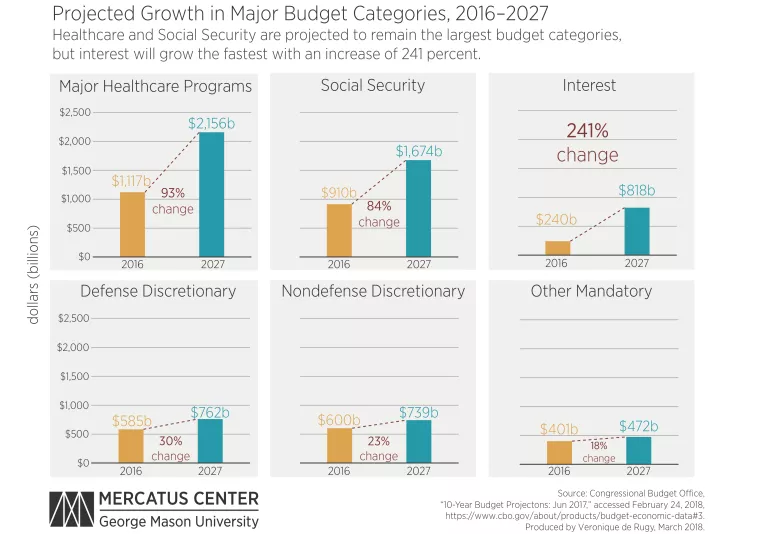- | Government Spending Government Spending
- | Data Visualizations Data Visualizations
- |
A Breakdown of US Budget Categories
Growth in federal spending is uneven, with some programs leaping upward in costs while others increase more slowly over time.
Federal spending can be divided into three general categories: mandatory, discretionary, and interest on the debt. Mandatory spending has numerous parts, but the largest ones are major healthcare programs (Medicare and Medicaid) and Social Security. Discretionary spending is generally divided into defense and nondefense.
Major healthcare programs, Social Security, interest on the debt, defense discretionary, and nondefense discretionary make up the five largest parts of the federal budget.
While the costs of all five of these components are expected to increase, they are not expected to increase equally. From 2016 to 2027, defense and nondefense discretionary spending are expected to increase slowly, whereas major healthcare programs and Social Security are expected to nearly double. Yet none of these increases compare to the increase in interest on the national debt, which is expected to more than triple over the same period.


